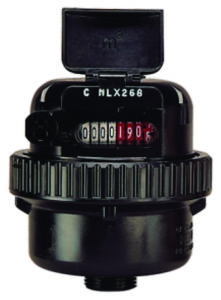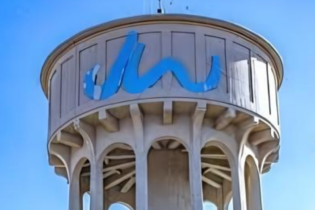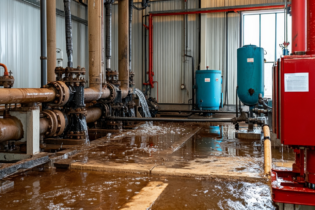The decision to invest in good quality water meters that are specifically designed and optimised for South African water conditions can significantly reduce non-revenue water and enhance and maximise an authority’s revenue.
According to Mark Shamley, MD of Elster Kent Metering: “Water losses in the distribution system can be categorised into two types: the real losses from leakage or the apparent commercial losses that often result from inaccuracies in metering, meter reading errors or even billing errors. These losses can have a negative impact on the municipality’s revenue, despite these apparent water losses being easily reduced through choosing the best performing meter that is suited for the specific local water conditions.” Most domestic meters in South Africa are mechanical devices and performance degrades as a result of:- volume of water flowing through the meter
- quality of water flowing through the meter –suspended solids (grit) in the water supply.
In the graph provided, results of accuracy tests with grit in the water, show a comparison between the performance of a good revenue 1.5 Qp Class C Elster Kent Meter, against a cheaper model imported from the East. The test results show thatthe cheaper imported meter under-read by as much as 9.95%than a good locally produced Elster Kent meter. In this specific example, the under-reading of the cheaper import caused the authority to lose R45.83 per month per meter in lost revenue compared to the local meter (using Johannesburg tariffs for 2012/13), yielding a payback on the original cost difference of the meters of only 0.7 months.This would equate to R4.58 million lost revenue per month for the authority should it have 100 000 of the cheaper imported meters installed, (or R55 million per annum – the equivalent of the total annual meter Capex of an average sized metro in South Africa).
Meters in South Africa are typically installed for periods of 20 to 30 years, but due to local water conditions, the optimal meter replacement period in South Africa is probably every 8 to 10 years, depending on the household’s water consumption, the quality of water going through it and the quality of the water meter. The Elster Kent KSM Volumetric meters are a fine example of a good revenue meter that caters for African water conditions. The unit provides optimum accuracy and performance at all times, even at the lowest flow rate. The meter can be installed in any position, i.e horizontally, vertically or inclined pipelines, maintaining optimum performance with no loss of accuracy. The Elster Kent low revving revolutionary grooved piston provides a long working life and ensures that meter stoppages are substantially reduced, durability enhanced and performance improved as a result of the uniquely designed grooved piston within the meter measuring chamber. The action of the grooved piston, with the stationary chamber wall, creates flow eddies that hold solids in suspension until flushed out, thus reducing meter stoppages. Another unique feature of the unit is the gear train that is mounted in a gearbox. This maintains optimum alignment of the gear and reduces friction. The compensating ramp is a unique way of allowing movement in the plastic body where there are pressure shocks. Other meters do not generally compensate for this movement leading to mal-alignment of the gear-train. “At the end of the day, the water meter is the cash till of the system.The cheapest meter is not necessarily the best revenue meter, and in the long run procuring a good quality, good revenue meter can pay back in less than a month. The actual cost of metering should take into consideration the average cost of the meter, plus the cost of water that the meter doesn’t measure, ”maintains Shamley.







